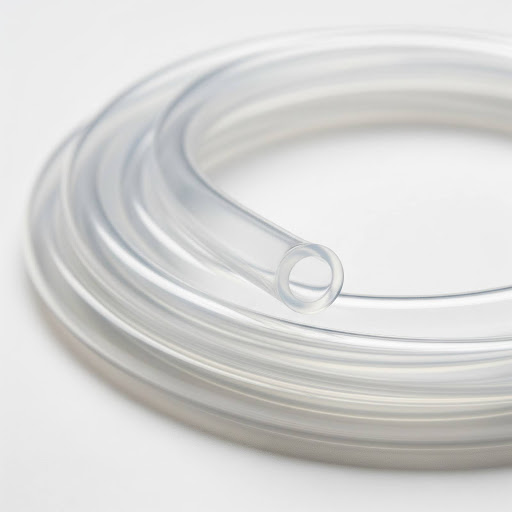
Choosing the Right Tubing for Media & Fluid Transfer in Bioprocessing: What You Need to Know
Tubing is a vital component in single-use systems, facilitating efficient fluid transfer in Bioprocessing. This document will explore various tubing options, including sustainable choices, and guide you on how to select the best fit for your specific requirements.
Choosing the right material
When designing biopharmaceutical processes, selecting the
appropriate materials for single-use tubing is crucial. The two
most frequently used materials for this purpose are thermoplastic
elastomer (TPE) and silicone.
| Silicone | Thermoplastic elastomer (TPE) |
|---|---|
| Excellent chemical inertness | Enhanced flexibility and adaptability |
| Advanced temperature resistance | User-friendliness |
| Outstanding biocompatibility | Optimal biocompatibility |
| Superior longevity | Cost efficiencies |
For bioprocessors, material selection depends on application requirements. Silicone is essential for exceptionally demanding applications. However, TPE options should be considered for most non-specialized applications to cut production costs without compromising processing performance.
Tubing Recommendation Chart: A Comprehensive Guide to Material Selection
Selecting the appropriate tubing for a pump system is crucial for optimal performance, longevity, and safety. A Recommendation Chart, as referenced by Saint-Gobain, provides a detailed overview of various tubing types, highlighting their key characteristics and suitability for different applications. Understanding these properties will help you make informed decisions, ensuring efficiency and preventing system failures.
Key Considerations for Tubing Selection
- Pump Life
- Burst Pressure
- Vacuum
- Weld and Seal
- Overmold
- Chemical Resistance
- Permeability
- Temperature Range
- Sterilization Compatibility
- Spallation
- Transparency
Regulatory Information: Bioprocessing Tubing
Available regulatory compliance requirements include:
- Good Manufacturing Practices (GMP): Ensures product quality, safety, and efficacy.
- US Pharmacopeia (USP) Class VI standards: Assesses the biological safety of plastics used in medical devices and pharmaceutical applications.
- ISO standards: Includes ISO 10993 for biocompatibility and ISO 14644 for cleanrooms.
- FDA regulations: Governs tubing use in pharmaceutical applications under cGMP and aseptic processing.
- European Pharmacopoeia: Sets standards for materials and processes used in pharmaceutical tubing in Europe.
- Bioprocessing standards: Guidelines from organizations such as BPSA for single-use systems, including tubing solutions.
Sustainability Considerations for Single-Use Tubing
The use of single-use tubing reduces the need for energy-intensive cleaning procedures and the associated use of water, chemicals, and sterilization agents, potentially resulting in a smaller environmental footprint over a full life cycle. Additionally, single-use technology (SUT) options are available that further improve sustainability profiles.
The sustainability implications of single-use versus multi-use tubing should be considered carefully when selecting a solution.
| Silicone | Thermoplastic elastomer (TPE) |
|---|---|
| Excellent chemical inertness | Enhanced flexibility and adaptability |
| Advanced temperature resistance | User-friendliness |
| Outstanding biocompatibility | Optimal biocompatibility |
| Superior longevity | Cost efficiencies |
Conclusion
To keep pace with the increasing demand for innovative biologics, bioprocess scientists need to remain agile and adaptable. Taking advantage of evolving tubing options is one way to do it, and it’s worth the time and effort to evaluate the choices.


